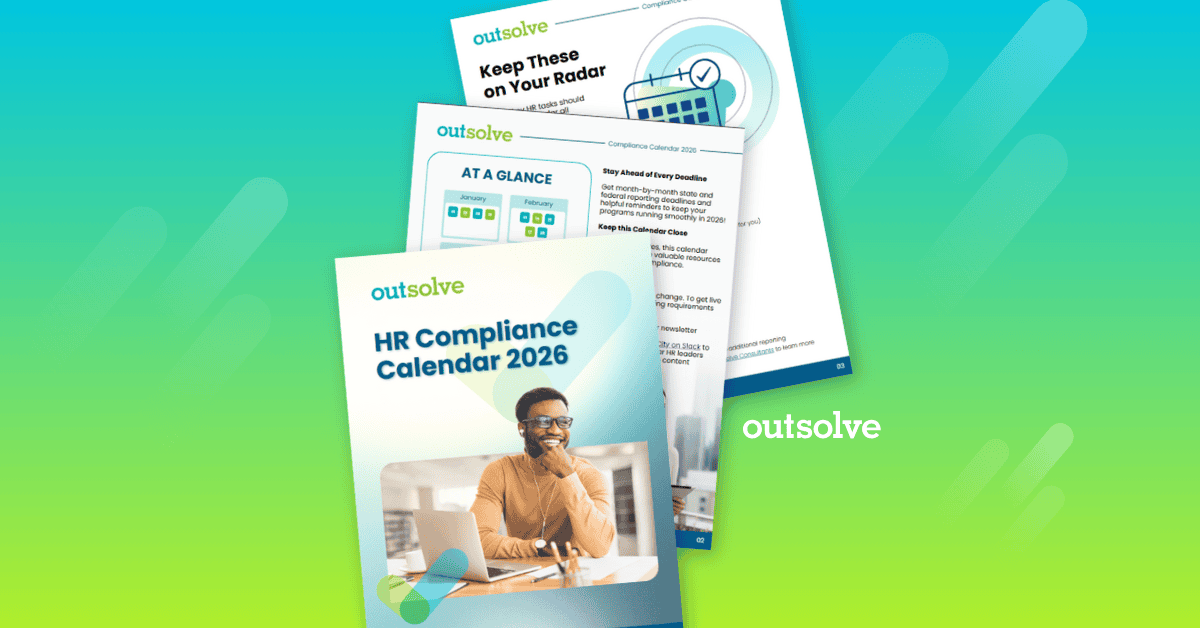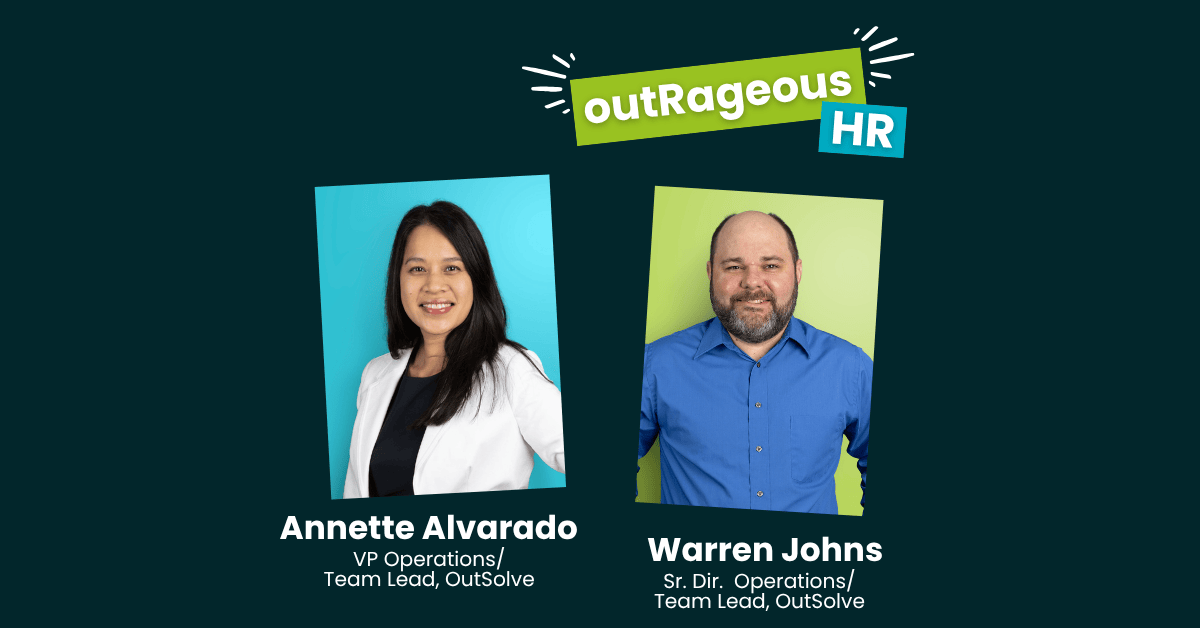5 min read
Form I-9 Reverification: What Is It and Who Needs It for Compliance?
 Desiree Throckmorton, SPHR
:
Jun 11, 2025 11:28:41 AM
Desiree Throckmorton, SPHR
:
Jun 11, 2025 11:28:41 AM

Human Resources professionals juggle a long list of responsibilities from recruiting and onboarding to benefits management and legal compliance, the list goes on. One critical, and often overlooked, piece that relates to compliance is Form I-9 reverification. Though only a few reverifications might be required per year, failing to properly complete reverification can lead to fines, and even legal trouble.
Let’s unpack what Form I-9 reverification is, who it applies to, and how HR teams can manage it confidently and efficiently. Here’s three key takeaways you’ll learn in this article:
- What is Form I-9 reverification and why it’s important.
- Who needs to be reverified and when.
- How to reverify a Form I-9 and reverification HR best practices.
What Is Form I-9 Reverification & Why Does it Matter?
Form I-9 is the official federal document used to verify the identity and employment eligibility of anyone hired in the U.S. All employers, regardless of size or industry, are required to complete a Form I-9 for each new hire and for employees hired after November 6, 1986, in the U.S.
But here’s the catch: not all work authorizations are permanent. This is where I-9 reverification comes into play and things can get tricky without the right process in place. Form I-9 reverification is the process of updating Supplement B of the Form I-9 when an employee’s temporary work authorization is nearing expiration.
Why is this crucial? Ensuring that employment eligibility remains valid throughout an employee's tenure helps you avoid legal complications and penalties for non-compliance. There cannot be any lapse in employment eligibility. Reverification supports ongoing compliance with the Immigration Reform and Control Act (IRCA) and helps employers avoid penalties that can range from hundreds to thousands of dollars per violation. It also confirms up-to-date documentation, which is required during internal audits or ICE inspections.
What Is I-9 Reverification?
Simply put, Form I-9 reverification is the process of revalidating an employee’s eligibility to work in the U.S. before their current authorization expires. This is done using Supplement B of the original Form I-9, formerly Section 3.
Employers are legally required to reverify certain employees to make sure that they continue to be authorized to work. Speaking of rehires and reverifications, it’s important to distinguish reverification from rehiring.
- Reverification is about continued employment with expiring work authorization.
- Rehiring occurs when a previously terminated employee is brought back on board within three years of their initial hire date. Most employers choose to complete a new Form I-9 for rehires as it’s difficult to track based on rehire dates.
The legal basis for this process is grounded in IRCA, which is enforced by the U.S. Department of Homeland Security (DHS).
Who Needs to Be Reverified?
Not everyone needs Form I-9 reverification. But those who do typically fall into one of the following categories:
- Aliens with Temporary Work Visas
- This includes individuals with temporary visas, such as H-1B, L-1, or other nonimmigrant visas, whose work authorization is tied to the validity of their visa.
- Aliens with Form I-766 Employment Authorization Documents (EADs)
- Employees who have EADs, such as those granted under Deferred Action for Childhood Arrivals (DACA), Temporary Protected Status (TPS), asylum status, or F-1 Students status need reverification when their EADs expire.
- Lawful Permanent Residents who present temporary evidence of Lawful permanent residency status. This does not apply to the 10 year I-551 card or the two-year conditional I-551 card.
- A temporary I-551 stamp (an ADIT stamp) or a Machine Readable Immigrant Visa (MRIV) in a foreign passport are given to individuals who pass their permanent residency interview but have not yet received their first green card.
- Individuals who present Form I-751, Petition to Remove Conditions, along with an expired Form I-551, must be reverified according to the guidelines. United States Citizenship and Immigration Services (USCIS) provides employment authorization extensions under certain conditions.
On the flip side, you should not reverify:
- U.S. citizens (even if their passport expires)
- Lawful permanent residents with unexpired green cards
- Employees with permanent work authorization
Mistakenly re-verifying the groups listed above is not only unnecessary but could also raise red flags in an audit.
When Does Reverification Need to Happen?
Timing is everything when it comes to Form I-9 reverification. Reverification must be completed no later than the date the current work authorization expires. Letting that date expire could mean the employee is working illegally, putting your organization at significant risk for noncompliance.
To stay ahead of the curve, HR professionals should develop a proactive scheduling system. Best practice is to set automated alerts to the employee, to the employee’s manager and to the HR team responsible for processing the reverifications for:
- 240 days before expiration
- 90 days before expiration
- 60 days before expiration
- 30 days before expiration
This not only gives you and the employee plenty of time to gather the required documents but also creates a paper trail that shows due diligence in case of an audit.
How to Complete a Form I-9 Reverification
Completing the Form I-9 reverification form isn’t overly complicated, but it does require accuracy and attention to detail. Here’s a step-by-step guide:
- The employee presents the originals of the document(s) needed for reverification.
- The employer agent uses Supplement B of the original Form I-9.
- The employer agent enters the new document information in Supplement B.
- This must be a valid List A or List C document. (Note: List B documents like driver's licenses are not acceptable for reverification as identity has already been established for the employee.)
- The employer agent signs and dates Supplement B.
- The employer must retain the form properly, either in a digital system that meets DHS requirements or in a secure physical file.
Don’t forget to provide the employee with advance notice to allow time to present updated documentation. A lack of cooperation on the employee's part should be documented, and the organization may need to consider termination if work authorization cannot be verified by the deadline.
Common Mistakes to Avoid During Reverification
Even seasoned HR professionals can stumble when it comes to Form I-9 reverification. Here are some common pitfalls:
- Reverifying U.S. citizens: This is not required and should not be done.
- Using incorrect documents: Remember, only List A or List C documents are acceptable.
- Completing Section 1 again: Only Supplement B should be used and completed.
- Forgetting to Sign and Date: Supplement B must be signed and dated upon reverification.
Avoiding these errors not only protects your organization from compliance issues but also saves time in the long run.
Best Practices for HR Teams
Managing Form I-9 reverification doesn’t have to be a headache. With the right systems in place, it can be a smooth and straightforward process. Here are some tips:
- Use a reverification tracker: A simple Excel or Google sheet, calendar tool, or integrated HRIS system can keep you ahead of deadlines.
- Assign a point person: Having one person responsible for I-9 management helps ensure consistency and accountability.
- Stay organized: Maintain clearly labeled, easily accessible (but secure) documentation that’s audit-ready at any time.
- Conduct regular internal audits: Spot-check Forms I-9 quarterly or bi-annually to catch errors before they become problems.
- Keep updated on changes related to employment eligibility.
Remember, reverification affects only a fraction of your workforce but mishandling it can have severe consequences.
What Form I-9 Reverification Means for Your Organization
Form I-9 reverification may seem like a small and infrequent task, but it plays a critical role in maintaining legal compliance and protecting your organization. While it only applies to employees with temporary work authorization, staying ahead of reverification deadlines is required to avoid costly penalties and interruptions in employment.
For HR, being proactive is your best defense. Whether it’s setting reminders, training your team, or running internal audits, small steps can make a big difference.
Don’t let reverification slip through the cracks, treat it as a vital piece of your overall compliance strategy. At the end of the day, peace of mind for you and your employees starts with a solid, well-managed Form I-9 process.
Contact one of our consultants today with any questions you may have. Have additional questions about Form I-9 compliance? Join HR Gumbo City, our vibrant Slack community where HR professionals can gather to share ideas and get answers to questions.
Desiree Throckmorton is a seasoned HR compliance professional with over two decades of experience, including significant tenure at a Fortune 500 company. In her current role as VP I-9 Operations, Senior Consultant, she provides expert guidance to enterprise-level clients on critical issues such as Form I-9 compliance, non-discrimination analysis, and best practices for pay equity and transparency. Throughout her career, Desiree has demonstrated exceptional proficiency in conducting internal proactive audits and managing external reactive audits. She has a keen eye for identifying risk areas in recruitment practices and excels in performing adverse impact analyses on employment decisions. Additionally, Desiree has successfully launched comprehensive, enterprise-wide training programs focused on Equal Employment Opportunity and Form I-9 compliance. Desiree holds the SPHR certification and has earned a Bachelor's Degree from California State University and a Master's Degree from Roosevelt University.
Weekly OutLook
Featured Posts

New Year, New Deadlines: 2026 HR Compliance Calendar

outRageous HR: Plan Now or Pay Later
Related Posts

In-House or Outsourced I-9 Management: Which Is Best for Your Organization?
Every U.S. employer, regardless of size or industry, is required by law to confirm each new hire’s identity and verify that they are authorized to...

outRageous HR: Building a Compensation Strategy That Actually Works
If your compensation strategy is mostly “gut feeling” plus whatever you did last year… it’s time to rethink your approach.

HR Compliance Checklist: What Every HR Pro Needs to Know
During times of sweeping change to federal laws, and with new state laws being enacted, it's more important than ever for HR professionals to ensure...
